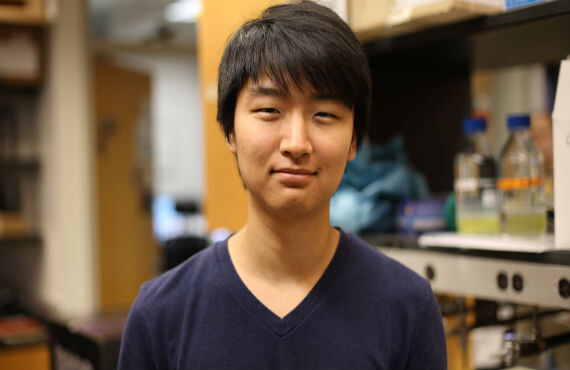Penn Student Studies Effects of Learning on Perceptual Decisions
For the last two summers, University of Pennsylvania junior Timothy Kim has remained on campus to explore the effects of learning on human perceptual decision-making.
Kim, who is from Incheon, South Korea, works in the Perelman School of Medicine laboratory led by Joshua Gold, associate professor of neuroscience.
Enrolled in both the College and the School of Engineering and Applied Science, Kim is majoring in computer science and biology with a concentration in neurobiology.
His research focuses on how learning, and the repeated process of gathering perceptual evidence, can influence our decisions. It is funded by a Vagelos Undergraduate Research Grant.
“On an intuitive level the goal is to understand how we make decisions and how those decisions are affected by the uncertainty of our surroundings and particular stimuli,“ Kim says.
He explains that we accumulate perceptual evidence until we reach a certain point, otherwise known as the criterion or threshold value. With this process completed and this value attained, we have made a decision.
Kim gives the example of spotting a person several meters away on a foggy day. He explains that we will take time to gather perceptual evidence, but, once we have accumulated enough detail, we will decide whether the person is an acquaintance or a stranger.
Kim and Gold look to use this understanding to predict subject behavior in a more detailed manner.
“We know that the brain can make these decisions and that you become better at it the more practice you have, but the fundamental question that guides our work is, What specifically does that mean?” Gold says.
To find answers, Kim has turned to formalized computational models, referred to as “rise-to-threshold” models. He is particularly interested in the drift diffusion model.
For this, Kim conducts experiments in which he gives subjects a simple visual test, one that establishes a relationship between the stimulus and subject behavior and that determines reaction time
During the test, a large number of dots move randomly until a certain portion breaks apart from the group and shifts to the right. Participants are asked to determine when that change point occurs.
“The advantage of this approach is that we can control the amount of noise used in the stimulus, which means we can control the uncertainty,” Gold says.
Kim says past studies like these have shown that learning, or knowledge and understanding gained by repetition, can refine and accelerate the evidence accumulation process, enhancing perceptual performance.
Kim notes, though, that these studies usually assume the threshold boundary is predefined and unchanging, so he and Gold decided to concentrate on the adjustment of threshold height across a sequence of decisions.
Kim explains that if the strength of perceptual evidence is small, then the threshold variability will be large, but, as the strength of evidence increases due to heightened perceptual sensitivity, variability in the threshold decreases.
His experiments have shown that for some subjects whose perceptual sensitivity increased consistently, the threshold stabilized as these participants began to make accurate decisions in a shorter span of time.
“Adjusting threshold height allows subjects to maximize their performance given the strength of evidence,” Kim says.
Since learning has been shown to enhance perception, and a stable threshold also seems to correlate to increased perceptual sensitivity, Kim believes the case can be made for a relationship between learning and threshold variability: once the subject becomes more perceptually sensitive, he or she will be able to readily determine the amount of evidence needed for a particular decisions and thus fix the decision threshold.
Although the lab is still in the basic research stages, Kim says the results could have many applications, from marketing to clinical studies.
For example, Kim points out that, if it’s known how the typical subject makes a decision, dementia or schizophrenia patients could be studied to see how their behavior diverges from the norm.
“The more we want to fix diseases of the brain and understand different pathologies, the more we have to know on a detailed level what the brain is doing when it’s learning,” Gold says. “These paradigms allow us to find the mechanisms.”








